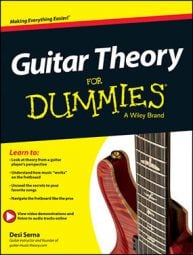A chord progression is any series of chords used in a piece of music. For example, on the guitar the chord progression to “Wild Thing” by The Troggs is A-D-E-D. Chords can go together in all sorts of ways, but they’re usually drawn from a scale, specifically, the major scale.
You use the major scale to stack groups of three intervals called triads. These triads harmonize the scale and form chords. Each scale degree produces a different chord and number. The sequence of major and minor chords found in the major scale looks like this:
1-2-3-4-5-6-7
Major-minor-minor-major-major-minor-minorf5 (also called a diminished triad)
Using the key of G as an example, the major scale chords are
G-A-B-C-D-E-Fs
1-2-3-4-5-6-7
G-Am-Bm-C-D-Em-Fsmf5
Play through this key by using the standard barre chords shown here.
![[Credit: Illustration courtesy of Desi Serna]](https://www.dummies.com/wp-content/uploads/416503.image0.jpg)
In music, different songs often use the same types of chord changes. On the fretboard, these chord changes make patterns that guitarists visualize and follow by number.
The neat thing about using patterns is that all keys look and feel the same. Numbers stay the same from key to key, too. You can pick up a chord progression (or series) from one key and move it to another as easily as moving a chord shape or scale pattern.

